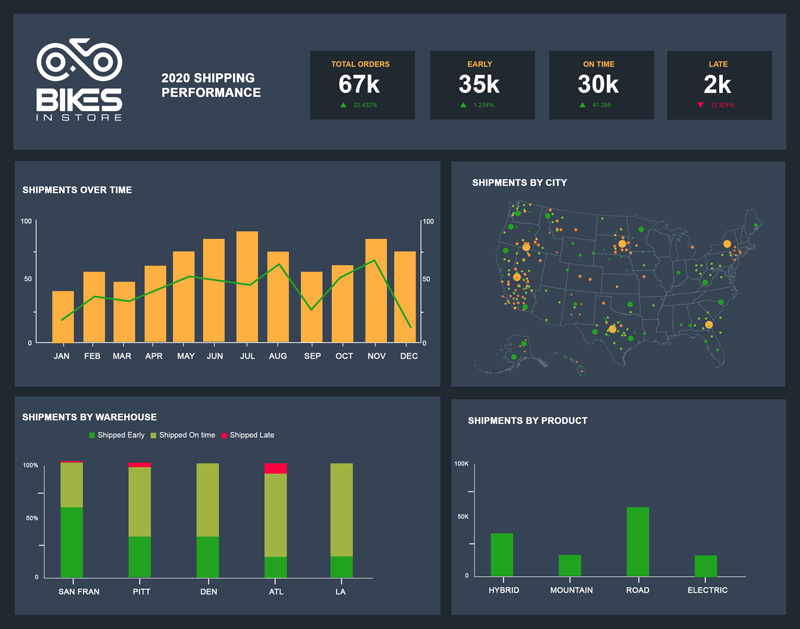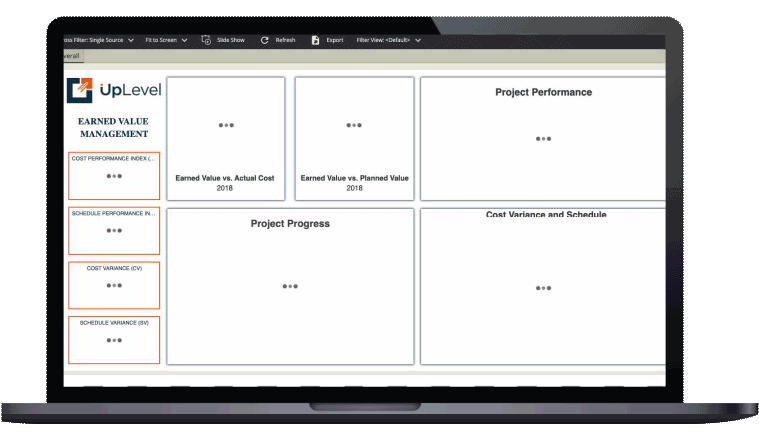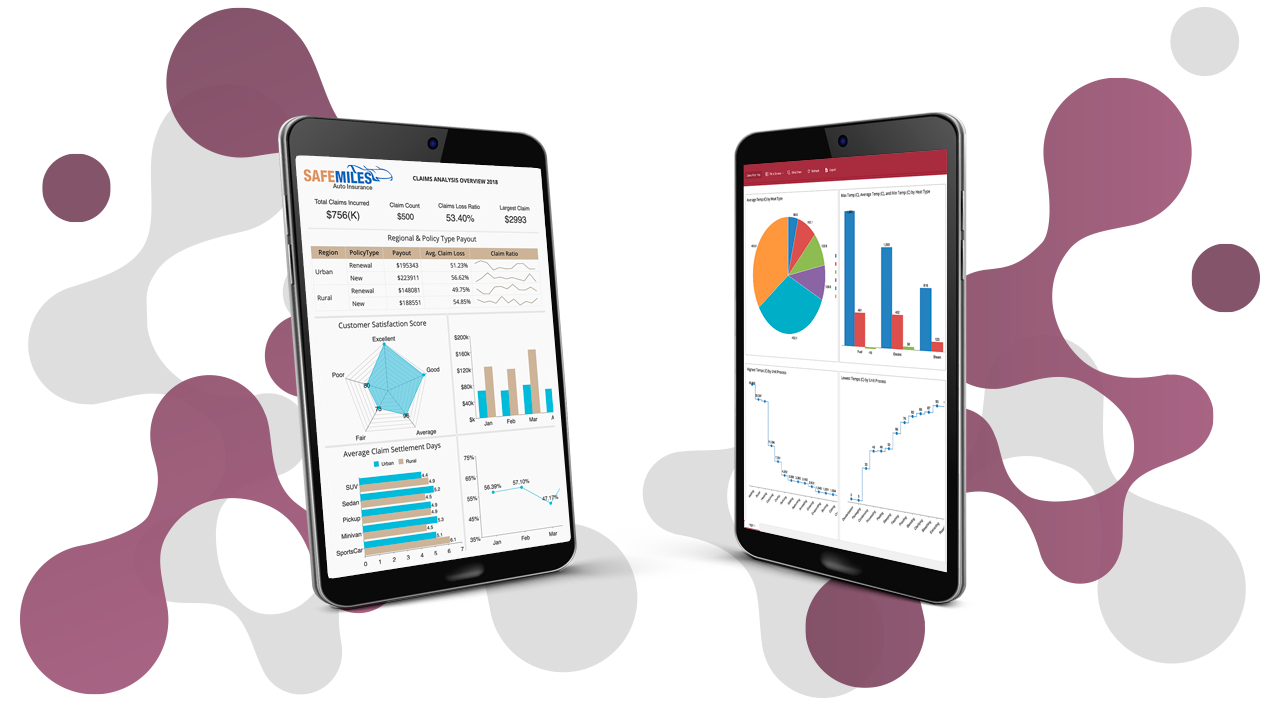Embedded business intelligence is the integration of business intelligence solutions within business process software. Embedded BI provides software with capabilities such as data visualization, analytics, dashboards, and reporting. Instead of using a standalone application, embedded BI enables business intelligence directly within an organization's applications.
Embedded BI also leverages the data context from the business applications to provide relevant information to the users as they work in familiar environments. Placing BI capabilities into a single application results in greater productivity and a higher rate of user adoption than using multiple applications at the same time.
The traditional BI approach depends on BI and IT teams to aggregate, analyze, and visualize the business data and provide the needed KPIs, charts, and other visualizations to help business decisions. Since this process involves multiple teams, it takes longer to produce an output that the business users can use for strategic and tactical decisions.
Traditional BI benefits from the in-depth analytics available to specialist teams. Embedded BI makes advanced analytics more accessible by integrating real-time reports and interactive dashboards directly into applications that users use every day.
What is Self-Service BI?
Self-service BI tools allow users to analyze business data and present the results of that analysis without waiting for the organization's IT staff members. It helps optimize decision-making capabilities across that organization by reducing the time to get to the analysis.
Embedded BI integrates self-service BI tools into business applications to enhance user experience with techniques such as ad-hoc reporting, interactive dashboards, and data visualization.
Embedded BI, along with self-service BI capabilities, allows users to customize their business applications further to suit their unique needs and drive tactical and strategic decisions for growth.
The embedded BI approach makes the BI reports and dashboards available to the users as part of the business application they use the most. Since they are part of the application, the application workflows determine the usage. The application behavior is seamless with the other business operations you would be doing as you use the application.

Embedded Business Intelligence Dashboard B - Shipping KPIs
Benefits of an Embedded BI
There are many benefits to embedding BI. Integrating BI into existing applications allows organizations to integrate data analytics, visualization, and insights within their applications more effectively. BI in general also improves insights and metric reporting as it can work with multiple data sources.
With the KPIs and other actionable insights available directly in the business applications, managers can make quicker and better strategic decisions.
Effective Data Insights
Typically, businesses use customer relationship management (CRM) or enterprise resource planning (ERP) solutions to make decisions without relying on outside specialists.
The use of embedded BI is permanently changing how they make these decisions by eliminating the need to leave their current systems. Incorporating BI into existing applications allows users to make more accurate decisions to achieve the desired outcome. It also improves the users' engagement in the system, which increases the value of these applications to the organization.
Improved Business Performance
Embedded BI can significantly enhance an organization's business performance by integrating operations with analytics. This capability allows application users to analyze data and take immediate action on their results. Furthermore, embedded BI facilitates the improvement of business operations by enabling real-time analysis-based KPIs.
For example, a manufacturing organization could use analytics to monitor and prevent maintenance problems by identifying patterns in equipment breakdown.
Placing BI into applications allows users to make better decisions by combining insights into data with corrective action. It enables applications to leverage analytics as part of their standard workflow, rather than a separate process. Assume for this example that a POS has embedded analytics for making recommendations to customers. These analytics can run in the background and provide customers with coupons or suggest other products based on what they've already purchased.
Buy vs. Build?
Today's organizations are increasingly likely to capitalize on the trend towards integrating BI into their existing software. The journey towards this goal often begins by making the decision to build BI in-house or buying a third-party solution.
It may be surprising to learn that an organization with software development as a core competency is more likely to obtain embedded BI from a third party than an organization that doesn't develop software.
Independent software vendors (ISVs) specialize in developing software like CRM, ERP, and financial applications. However, these organizations recognize that BI analytics is typically outside their expertise. ISVs are, therefore, more likely than general enterprises to buy embedded analytics functionality from a third party.
Typical enterprises that don't develop commercial software products are more likely to build this functionality themselves. They have proprietary business applications that IT teams have already developed, including those intended for consumption by outside parties such as customers and suppliers. These organizations are often eager to immediately begin an in-house build of analytics functionality upon deciding they need embedded BI.
However, general enterprises should first consider the embedded analytics that is commercially available, like ISVs do. Third-party vendors are more likely to be experts in the latest BI technologies and trends, including predictive analytics, machine learning, and interactive visualization.
Furthermore, buying embedded BI allows organizations to focus on their core competencies, allowing them to leverage the toolset to bring the BI capabilities to the users more quickly.

Embedded Business Intelligence Dashboard - Project Management
What to Look For in an Embedded BI Solution
Once you've decided to buy an embedded BI solution, you should carefully investigate its features. Organizations may have unique requirements, but they often need many of the same BI capabilities.
For example, white-label self-service BI allows users to customize a third-party product to fit the look and feel of the solution it embeds into. Embedded BI should also include an application programming interface (API), which allows the business application to use custom hooks when embedding the BI capabilities.
Scalability is also a vital characteristic in a BI solution, especially for an enterprise. In particular, the scale of the solution's operations must be able to increase quickly in response to an increase in its user base.
A third-party BI solution should also use a clear and straightforward licensing model, allowing organizations to quickly calculate the solution's total cost of ownership (TCO). It's also vital that the TCO not become cost-prohibitive as its operation scales up.
Users must also be able to use the embedded BI aspect within their business software without needing to log in a second time. Businesses should ensure that the third-party solution they select has security extensibility, meaning the solution can inherit the authorization and permissions needed to access it from the business application. For example, SaaS-based applications with multiple tenants should be able to secure resources at the data level.
For additional context, our article, 5 Things to Consider When Investing in a Business Intelligence Software, discusses compatibility, UI and UX, embeddability, white-labeling, and affordability.
Embed Turnkey Dashboards & Reports
Wyn is a 100% web-based embedded BI platform that provides greater insight into your data.
Wyn offers built-in tools for report and dashboard creation, multi-tendency, data governance, security integration, and automated document distribution. All with an easy-to-use interface for self-service BI.





























